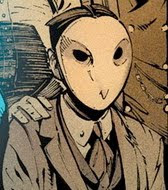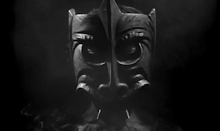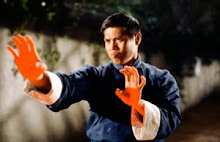Room 237 is not your average documentary about a film. It
takes as its focus Stanley Kubrick’s version of The Shining, not its making,
not even so much its meaning, but the effect that the film has had on its
audience. The film focuses on ten people who have turned the movie into a kind
of giant Rorsarch blot. In which they see whatever the hell they want to see.
No. Seriously.
According to these folks what The Shining is really about is
the battles with the American Indians over control of the country (okay…) the
holocaust (well that’s a bit out there…) and finally how the film really stands
as Stanley Kubrick’s confession that he faked the moon landing (Well then). The
message that the film really conveys isn’t so much that any of these theories
are right, as that Stanley Kubrick has made a powerful disturbing film and it
has driven some people around the bend, if quietly and benignly so.
The best part about this is that no matter how outrageously
crazy the claim they find evidence to back it up. The thing that makes these
people all so convinced that they’re right is of course that nothing got into a
Kubrick film by accident. The man was obsessively meticulous about the design
and construction of his film, and The Shining where he built all the sets to
spec and shot for over a year, represents the outer limits of his control. So
if anyone was able to encode say a confession that they were the gunman on the
grassy knoll in their horror film it would be Kubrick.
This is the exact same reason that the film’s other line of
argument is so compelling. Though the film’s theories of theme are somewhat
less than convincing (and really in all fairness Room 237 never pretends that
they are, they just let the theorists speak for themselves, not favoring any
one theory over the other, just objectively presenting them) its thoughts on
The Shining’s style are really quite fascinating. The Shining underlines the
fact that Kubrick had grown somewhat obsessed (as he was want to do,) with
advertising and it’s techniques. Pointing to the stylistic differences The
Shining has with his previous film Barry Lyndon, Room 237 points to the idea
that Kubrick constructed The Shining as a subliminally upsetting horror film.
One where the ordinary scares are really a distraction from the more
insidiously upsetting ways that the film is put together. Through quirks of set
Design Kubrick creates windows where no windows should physically be able to
exist, through continuity errors he creates an environment that’s ever shifting
and morphing, with unconventional edits, an accumulation of odd details he
creates a film that is aimed directly at your subconscious.
Once again how much of this is intentional (I’d be willing
to bet a fair bit) and how much is accident remains an open question when Room
237 ends. After all even a film as hermetically sealed as Kubrick’s can’t avoid
all human error. But even if only a fraction of what Room 237 shows is on
purpose it still presents a film that is genuinely one of a kind. It forces one
to reevaluate The Shining as an out and out booby trap. Not bad for a film that I always
somewhat dismissed as a shoddy adaptation.





































































































No comments:
Post a Comment